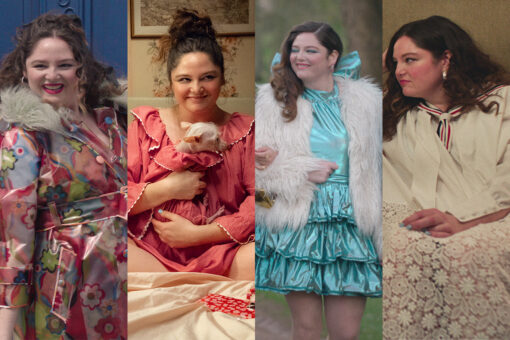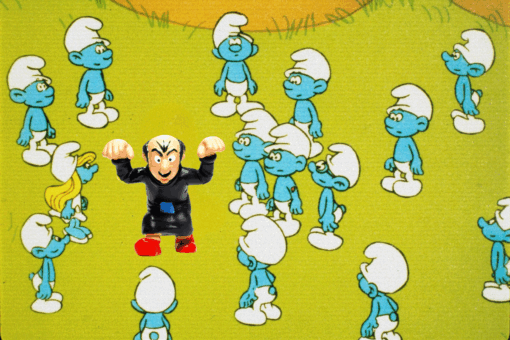A couple months ago, I tried to make my mom’s challah. I’d moved out of my parents house five years ago and by that point had tried my hand at my mom’s chocolate chip cookies, vegetable kugel, latkes and fruit crisp — but this was different. My mom’s challah recipe was a two-day endeavor requiring careful attention, perfected by her over 20 years. I felt like I was graduating from baking soda volcanoes to quantum physics. Although the braided bread intimidated me, it felt necessary to conquer.
This was the challah my mom made from scratch every week, whose sweet scent filled the house Friday afternoon to my eager anticipation. Its crust: golden brown. The interior: rich, soft and flavorful. On top: a sugary streusel. That challah always taunted my impatient stomach while cooling off on the counter as I popped steaming streusel crumbs into my mouth before dinner.
At Shabbat dinner, after we washed our hands and my mother said the blessing on the bread, my siblings and dad would usually take one piece, saving room for the dozens of other dishes my mom tirelessly prepared that day. I could never control my impulses. I practically polished off a loaf myself each week, letting the dough melt in my mouth, licking up every last crumb of streusel.
This wasn’t just because I loved challah, generally — it was specific to my mom’s recipe. Store bought challahs were always too cakey for my taste, and other homemade challahs, however well-baked, just never measured up. No matter how many I tried, my mom’s challah was always superior.
I know everyone is partial to their mother’s cooking, but in my defense, my mom had a successful catering business for three years. She topped that off with about 500,000 hours of Food Network viewing under her belt which, as far as I’m concerned, makes her a culinary expert. All this to say, when I decided I wanted to take a stab at her challah recipe I knew I had my work cut out for me.
I told my mom about my goal and she sent me a picture of the faded, yellowed recipe page, splotched with various food stains. She then called, knowing I’d need guidance, and it became apparent that the recipe was hardly a recipe at all. At least, not for the challah I’d devoured weekly growing up. On the phone my mom rattled off instructions — substitute honey for sugar, use quick rising yeast — as I frantically typed into my Notes app.
When I started baking in my boyfriend’s kitchen, the grocery stores were closed. I did not have honey and had only been able to find fresh yeast. Those were strikes one and two. Still, filled with the adrenaline of setting out to master a brand new daunting skill, I forged ahead with my insufficient ingredients. I mixed the flour, eggs, salt and sugar together, adding each in the order my mom had instructed, afraid to deviate any more from her fine-tuned process. I covered the dough and left it to rise overnight. The next morning as I kneaded and braided the dough things seemed to be going smoothly enough. After letting the braided dough rise again, I put the two challahs in the oven and set a timer for 20 minutes, so I could check on them 10 minutes before they were supposed to be done.
When the familiar trill sound rang from my phone, I opened the kitchen door to find a smoke-filled room with the dreaded scent of burning in the air. In the oven were three black challahs. I had mistakenly put the oven on the “Fan Forced” setting, which cooks food faster and browns its surface.
Upon seeing my best efforts wasted on charcoal blobs, I promptly collapsed sobbing into bed, rocking back and forth in the fetal position. I’d failed myself, my family and my people. My boyfriend didn’t understand my distress — after all, it’s just bread. After failing to console me, he kindly cleaned up my mess in the kitchen, washing dishes while I sulked in self pity. I knew my reaction was overdramatic — it was just burnt bread, nothing worth crying over. But I couldn’t help feeling that this was only the latest in my long series of Jewish failures.
My family is Modern Orthodox, but I’ve never felt like I quite fit it with our community. My religious distance from my family amplified when I left for university and stopped practicing entirely. I didn’t believe in it, so I couldn’t see the point. I tried Hillel, but I felt so out of place and disingenuous, I gave it up.
My parents were disappointed, but five years down the line have more or less made their peace with my secularism. Meanwhile, in my own time, I have begun to embrace my Jewish upbringing in a new way: through food. Jewish cultural traditions are just as fulfilling as ritual prayer or Talmud study, to me at least.
But after I burned the challah, I realized that cooking Jewish food was not a casual endeavor for me.
With every one of my mom’s recipes I’ve cooked over the past year, I felt a need to both prove to myself that I could maintain my Jewish identity without being religious and to my family that, despite my seeming rejection of my upbringing, I was grateful for my Jewish heritage and intent on carrying on our traditions. Mastering my mom’s challah was actually not just about bread — it was about so much more.
After crying myself out, I returned to the burnt mess in the kitchen and found that while the outside was blackened, the inside actually cooked quite nicely. I cut off the crust and made French toast with the remains.
A few weeks later I returned to the recipe, determined not to make the same mistakes. I stocked my pantry with the correct materials and got to work. This time after braiding the challah dough, it refused to rise a second time. Panicked, I texted my mom, sure that she’d have the answer. Of course, she did. My apartment was apparently too drafty, so I was instructed to set the oven to a low temperature and let the dough sit inside covered for a few minutes. It worked. The dough rose, but the process left the braids completely misshapen.
I decided to not let myself be deterred by aesthetics and just concentrate on getting the taste exactly right. I covered the warped dough with streusel, which made it look slightly better, and put it in the oven. This time I stayed in the kitchen with my eyes glued to the glass door.
The challahs came out accompanied by that familiar sweet smell, but I was still apprehensive slicing into the warm bread.
I bit in and was overcome with relief.
The flavor transported me back into my childhood kitchen, sitting at our wooden table eating the lightly salted delicious challah slices in my seat, always facing right across from my mom. I ate thick slices until my stomach expanded uncomfortably against the waist of my jeans. Then, I ate a few more.
I texted my mom a picture of the final product and got her seal of approval. “OMG. Like a pro!!” She asked how it tasted and I told her it was pretty similar to hers. She wrote back: “Naturally.”



